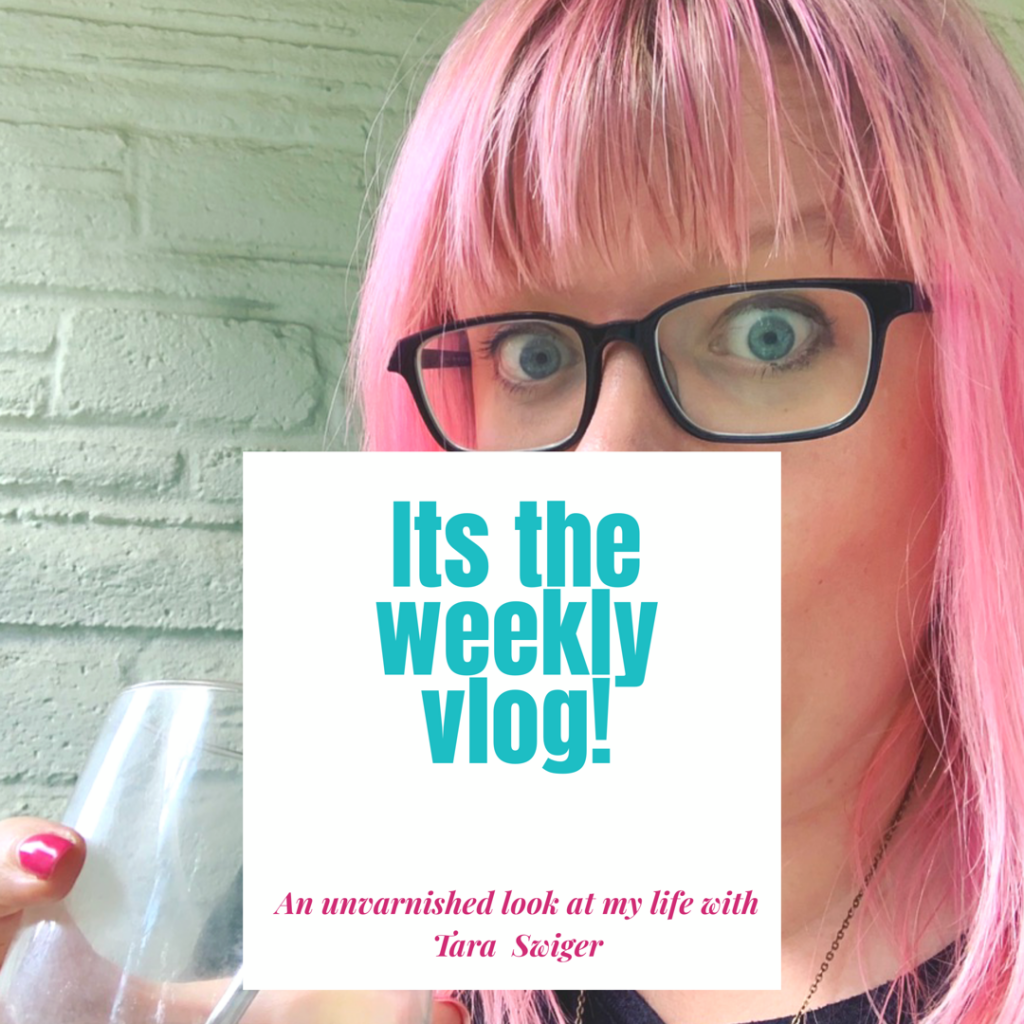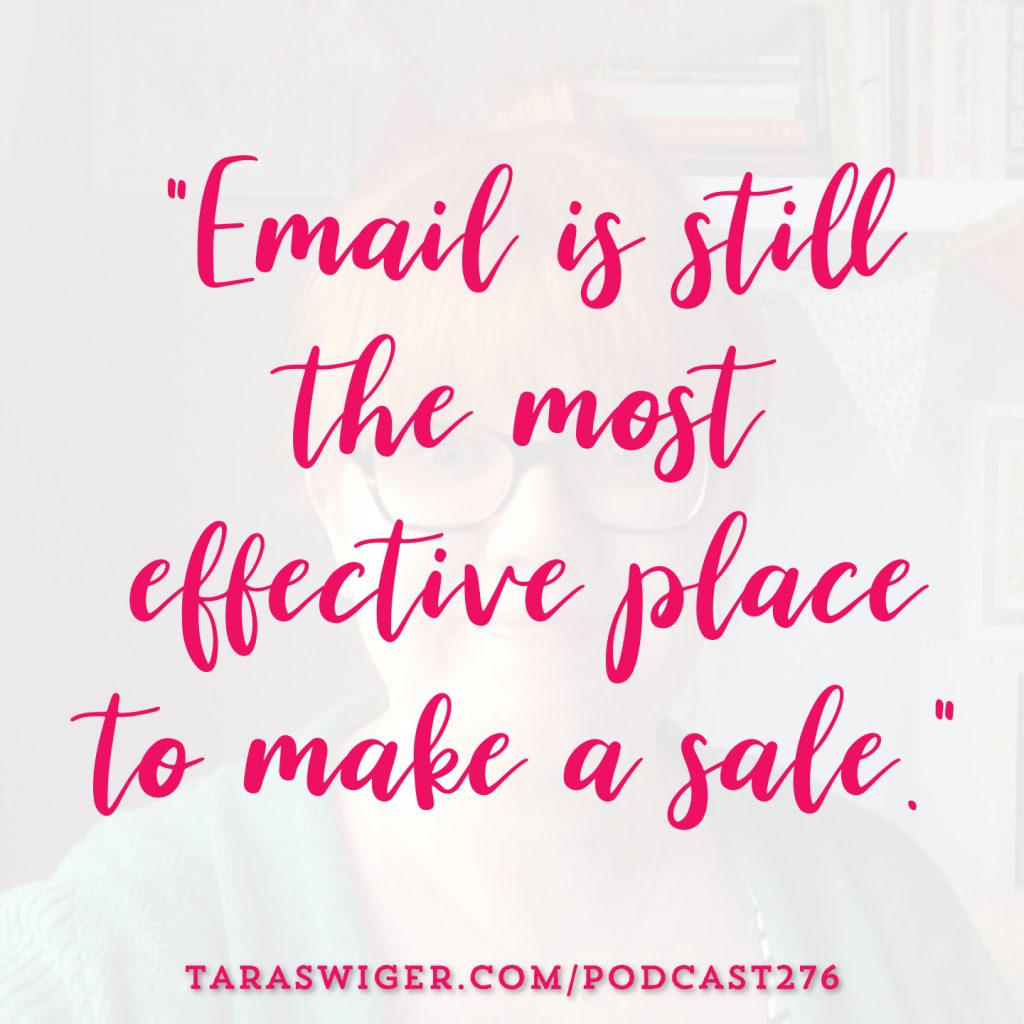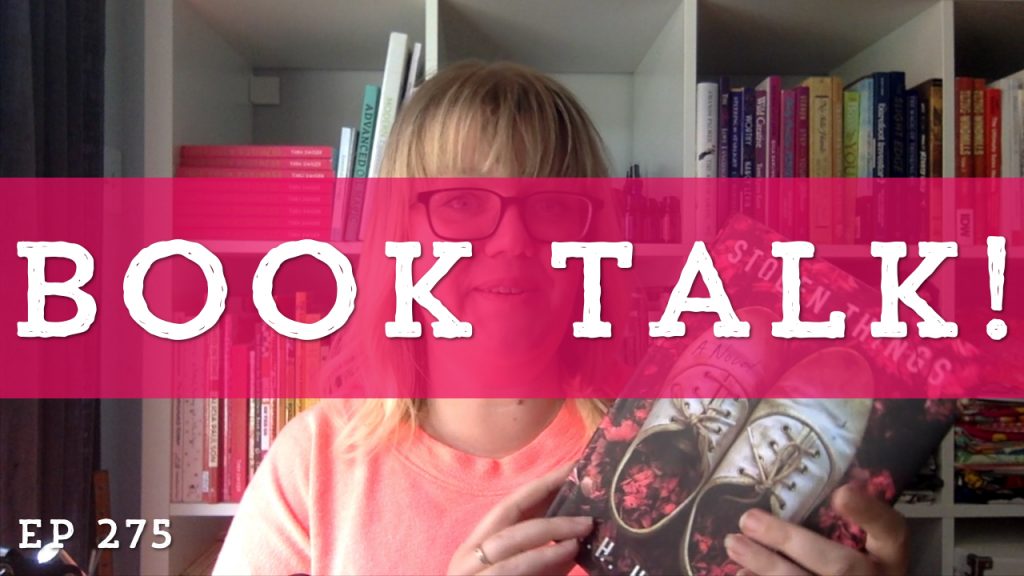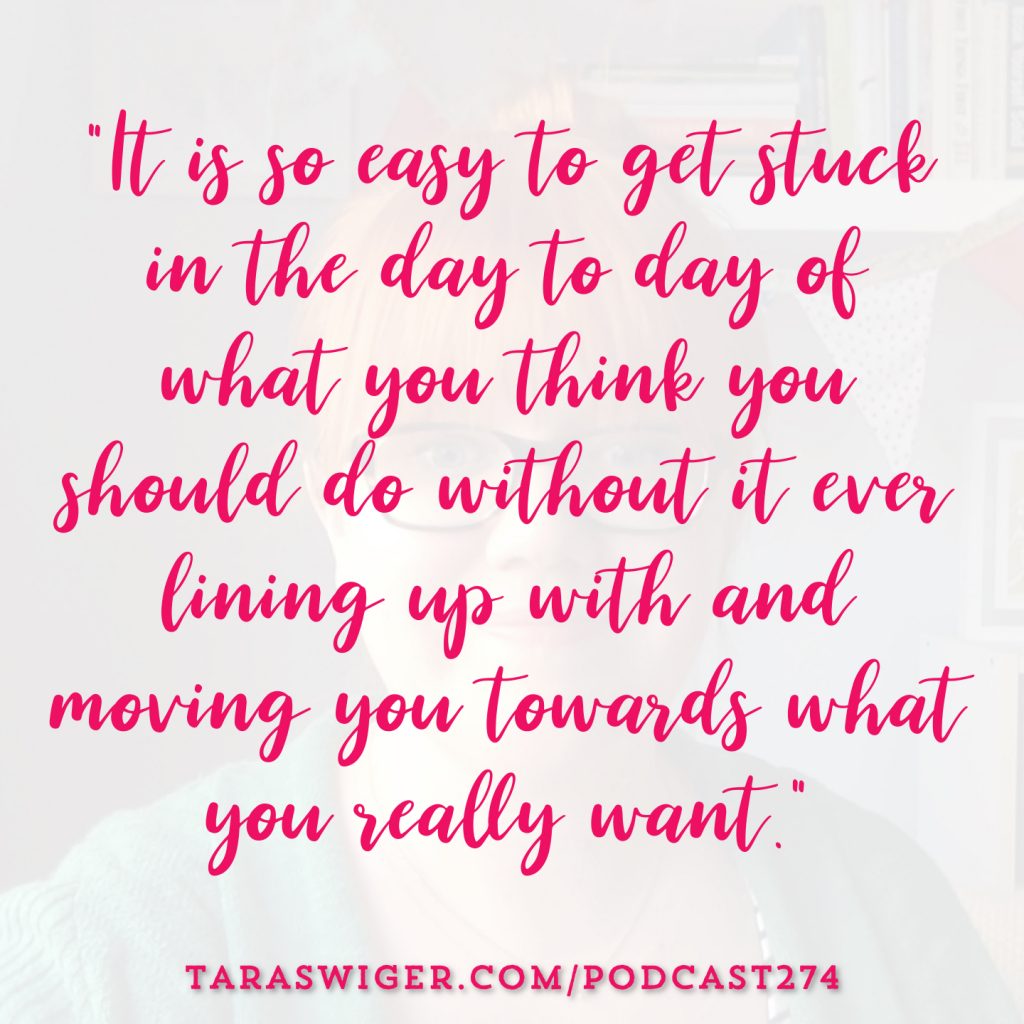Podcast: Play in new window | Download
Today is kind of a part 2 to last week’s episode, where we talked about if you even need a traditional business plan. Last week I walked you through what to do for an effective plan, if you don’t need a traditional one. You can find that at taraswiger.com/podcast277
That episode is going to help 98% of you, my readers, get super-clear on where your business is and where it’s going and how the heck to plan that out.
But if you DO need a traditional plan, today I’m not only going to tell you what to include, I’m going to share snippets of our own business plan. The one Jay and I took to banks and business advisors, when we were planning on buying a comic shop.
Now, even if you don’t think you need a traditional business plan, I don't want you to skip this episode, because I want you to dream BIGGER. Expand your idea of what's possible. So many makers are afraid that getting “big” would be too scary, so I want you to hear what it actually takes, because I know you ARE capable of it. So if you've ever had a dream of having a shop, or renting a workspace or opening up a cute Shop Around the Corner, please listen even though you may not need it now.
It really could be you – in the last decade of working with makers and artists, most of whom only had an etsy shop when we started working together, dozens have quit their jobs (and needed to show their partners how they would make it work), a few have opened brick and mortar shops, and one, Katie of Yarn Love, has bought land and built an entire dye studio for her business. So yeah, you may not need it TODAY, but you may need it sooner than you think.
As a reminder, you need a traditional business plan, when you bring anyone into your business – a bank loan, an investor (even a family member investment!), or a business partner.
When you go talk to a bank or an investor, they are looking for some very specific documents. The best resource is SBA.gov – it has tons of tools to help you make this, so I'm going to suggest you go to their website and use all their tools, even if you're not in the US, because they have samples and way more information that I'm going to cover here. If you are in the US, you're going to need to adhere to their guidelines – it's what banks want and expect.
Let’s get right to it, here are the parts of a traditional plan, along with what we included in our business plan:
Executive summary:
This is where you put the overview of your business and what it stands for. You'll include your missions statement, your business model (what do you sell and how?) and everyone high-level in your business. If you're asking for funding, you'll include some numbers up here (what you're asking for and when you'll be profitable).
(We skipped this part)
Business description:
This is super-specific description of the business – what's it's address? What does it sell? How many customers does it have? What are your advantages? You'll put your strengths in this section.
Real Life Example: “X was founded in DATE by person, (short founding story). For over X years, the shop has sold {products} and has {competitive advantage}. It won X awards. It is located at {LOCATION.}
The print comic book industry is a $940 million industry in North America with 98 million individual copies sold from the major distributor, Diamond Comics.
How the industry works:
Individual issues of comics are released monthly or bi-monthly with new titles coming in every week. The shop places orders for the titles three months in advance.
There are three types of customers {explained in detail the kinds of customers}
We described the business model and the primary partners and distributors.
The current business:
We shared specific numbers from the current business and the problems we saw that we would change. We then had a detailed paragraph about every problem we saw and how we would change it (including software we would buy, systems we would implement, incentivisation we would offer and more.)
Market analysis:
Now we're getting to the part where you'll need to do some research – in this section you'll list the businesses who are competing with yours (other local shops?) and what your target market is. How big is the market? How much money do your people spend on your product each year? You'll also talk about trends and themes here – what do successful competitors do? Why does it work? Can you do it better?
Real life example: In this section we included local competition (other shops, including the chain bookstores) and what advantage and disadvantages they had, and online competition. We then wrote a detailed analysis of how we would compete with online comic sales.
After the Competition section we had a Market Analysis section where we specified the shop’s demographics by percentage compared to the industry demographics. We wrote in detail about how the market was shifting and what we would do shift the shop’s demographics to where trends were going. We also wrote about the plethora of comic book-based media, the demo and stats of those shows and how we would capitalize on that media attention.
Organization and management:
This may be super simple – who does what? Who is in charge? Who will run the day to day of the business? If you have several people already working in your business, use an organizational chart and include information about their unique experience and what they bring to your business. This is also where you state the legal structure of your business.
Real life example: We included a paragraph on both Jay and Tara (the owners) that included our education, experience and roles in the company. We also specified that until the shop was profitable we wouldn’t be taking a salary. We put this section at the very end, because we were advised to rearrange this based on what the lender would care most about, which is how we would make money (financial and marketing).
Service or product line:
What do you sell? What is the lifecycle? What are the features AND the benefits?
Real life example: We included this in the company description, because we knew most lenders wouldn’t know anything about the industry and we needed them to learn about it up front.
Marketing and sales
SBA.gov says “Your goal in this section is to describe how you'll attract and retain customers. You'll also describe how a sale will actually happen. You'll refer to this section later when you make financial projections, so make sure to thoroughly describe your complete marketing and sales strategies.”
Real life example: “Our initial marketing plan is focused on fostering a sense of community and helping new customers feel welcome. We’ll achieve this by reaching the current audience more effectively (and more often) with consistent social media and email marketing, moving all customers through the sales funnel (from walk-in, to regular, to subscriber) through store displays and customer service and increasing the number of women and children who shop with us. Our initial promotional program, on all platforms, both in person and online, is to increase our subscriber base”
I then described exactly how we’d do this, including a bounce-back program.
Then we had sub-sections, including InStore Marketing, which had 2 examples of upcoming events and promotions around them. Each event had a description and up to a dozen bullet points of what we’d do it for it. We then attached a list of the next YEAR of dates of events and what we would do for them.
We also included a subsection of customer service, how we would improve it and systematize it and a subsection of social media which included the shop’s current assets, along with my plan for Instagram and YouTube. I started with stats, because I figured dudes in suits would know we should do social media, but wouldn’t really get it.
“Engagement with brands on Instagram is 10 times higher than Facebook, and 84 times higher than Twitter (Forrester Research, 2016). According to Pew Research, 55 percent of all online 18- to 29-year olds in the U.S. are using Instagram. We will use Instagram to connect with our customers, incentivize sharing to reach their friends, and to promote our in-store events and displays. We’ll make use of the location tagging and a custom hashtag, which empowers our customers to share the shop and stay top of mind.”
We had a subsection for Email Marketing, where I included my own email open rates and sell-through stats, and some industry stats like “According to studies from McKinsey & Company, email is 40x more successful at acquiring new clients than either Facebook or Twitter and a business is 6x more likely to get a click-through from an email campaign than from a tweet. When it comes to purchases made as a result of receiving a marketing message, email has the highest conversion rate (66%), when compared to social, direct mail and more.”
I specified when we’d send emails and what they would include and how we’d get new subscribers to our emails.
The last two subsections were website improvements and traditional marketing (ie, flyers on campus, press releases to the local papers, sponsoring a little league team, etc).
As you can see, this was a HUGE section, and that’s because we wanted to show how were justifying our financial projections which were quite aggressive. That’s the next section!
Financial projections:
This is the part that took us the most work and is also the most important section if you want funding or support. As the SBA says, “Your goal is to convince the reader that your business is stable and will be a financial success.”
If your business already exists, this is a bit easier because you have real data – include income statements, balance sheets, and cash flow statements for the last three to five years. (This is actually where buying the shop fell apart, the owner could not provide these in a timely manner, because of his own bookkeeping issues).
If you have other collateral you could put against a loan, make sure to list it now.
But if you have an established business or not, you also need include projections – what will your business make? We did this is a spreadsheet with monthly projections, both of expenses and income, for the first year, then quarterly for the next 3 years after that, then yearly for another 2-3 years.
We worked with an advisor at the local SBA office, who took current sales and used a formula of expected increased sales to give us specific numbers. But we had to come up with the expense categories and specific numbers.
For example, what would our rent be each month? (You need to have specific spaces in mind with their actual information).
What will your supply cost be? (And then you have to do that math – how many products will that yield? That will impact your income!)
What will insurance cost? (Get a real estimate!) What will internet cost? Utilities?
If you plan to advertise on billboards, what does that cost at the specific billboard? If you plan to advertise on Facebook to a specific audience, what will it cost to run that ad to that audience?
So we took all of our marketing strategies and tactics and researched what they'd actually cost us, then decided which month we'd really do them in, and put that in the spreadsheet for those specific months.
Then we could look at and apply that to projected sales. If we're doing a big marketing promo in June, will sales increase in June? Or July? Or 6 months later?
What months are sales high? Low? (You'll use the income info you already have, or you'll need to do industry research.)
Speaking of research, each industry has a trade association or a partner who can help you with these numbers. If you're a knitwear designer or yarn shop, you can get these numbers from TNNA. If you're a comic shop you can get them from the industry's only distributor, Diamond Comics. The SBA advisor then took these industry stats and translated into projections for what we could have in income.
This section might feel scary, but it also SO helpful – if you know April is a low sales month, you will adjust your projected expenses in those months. You can use this spreadsheet as you actually work in the business and compare projected numbers to actual number and then adjust your next projections accordingly.
And that’s it!
How to listen
- You can subscribe to it on iTunes (If you do, leave a review!)
- You can listen to it using the player above or download it.
- Subscribe or listen via Stitcher (or subscribe in whatever you use for podcasts – just search “Explore Your Enthusiasm” and it should pop up!).





